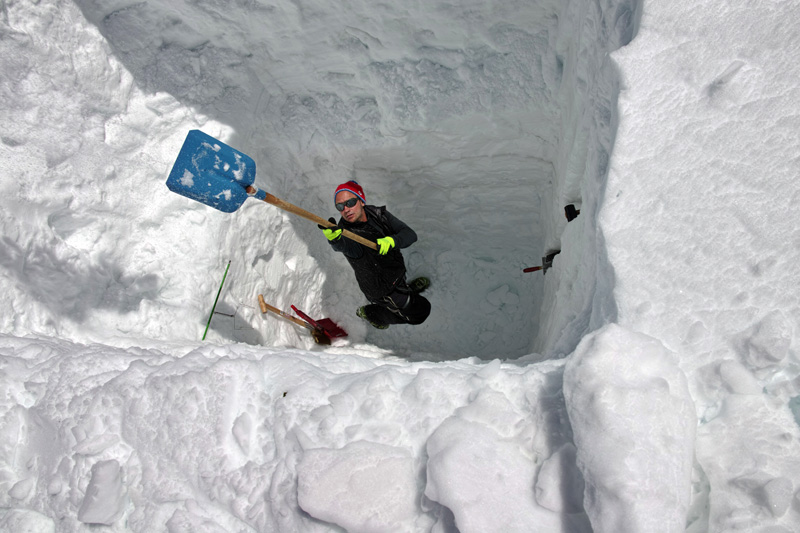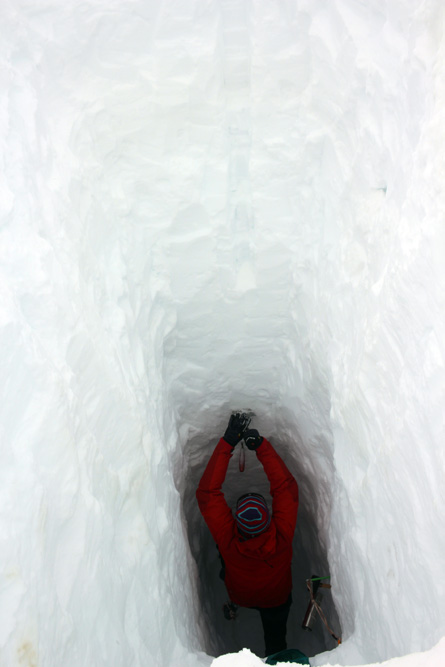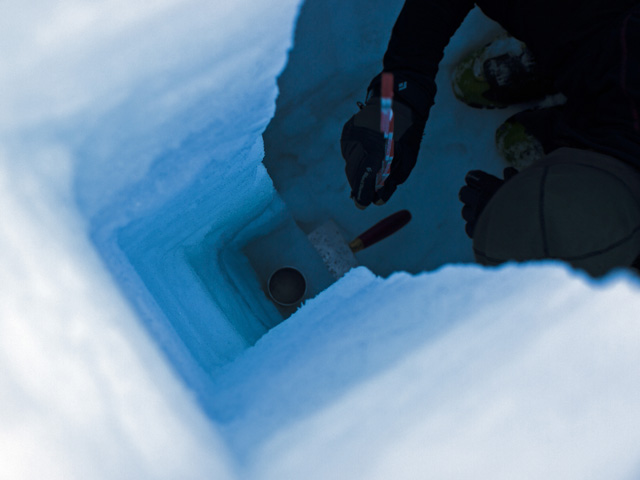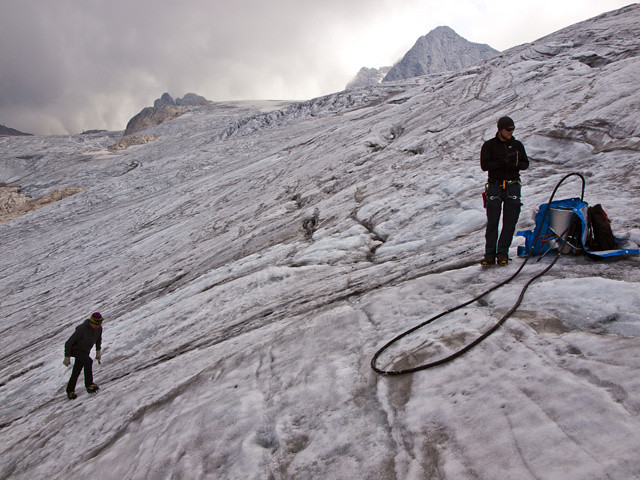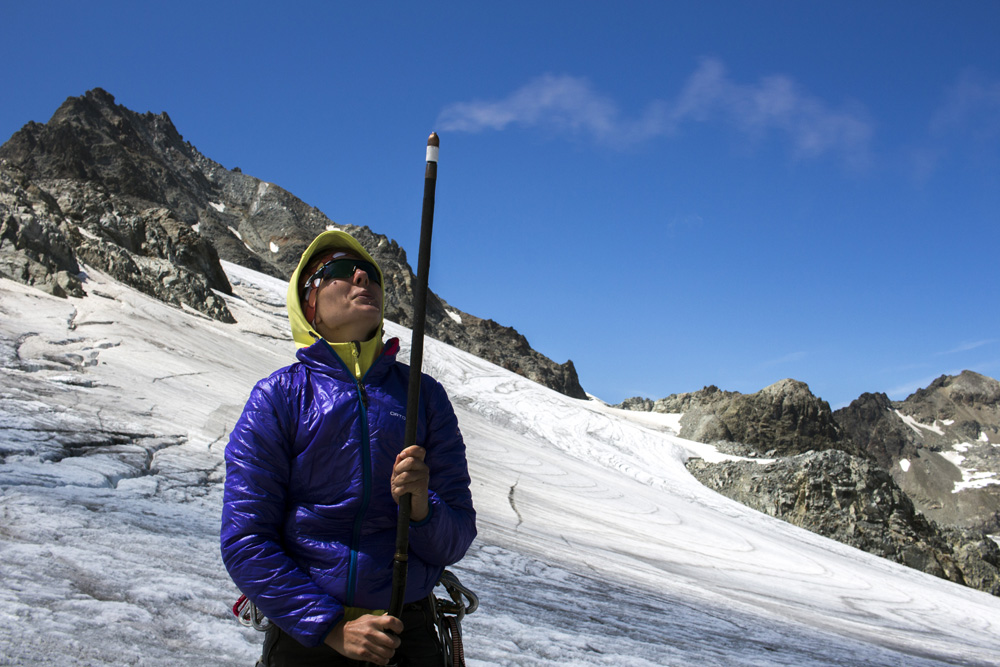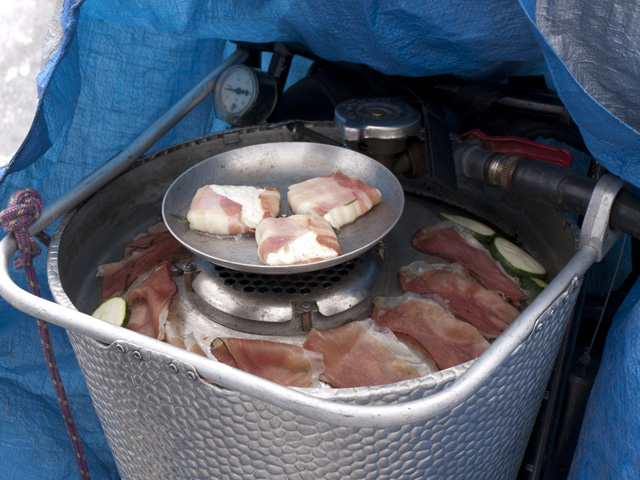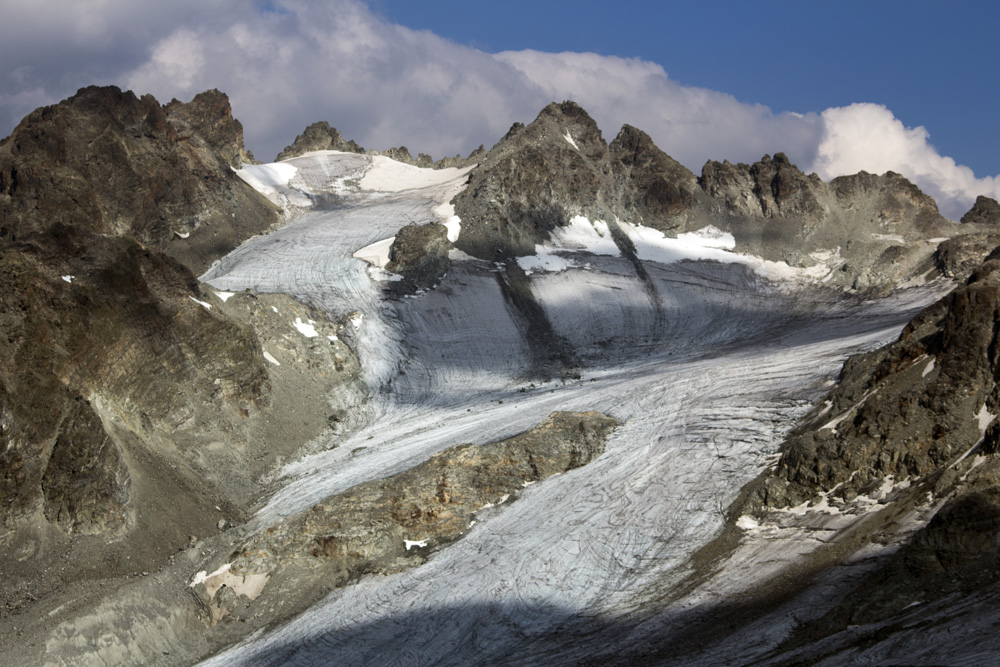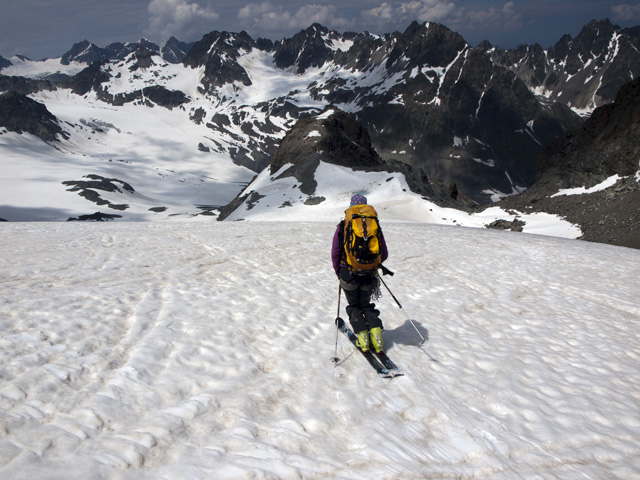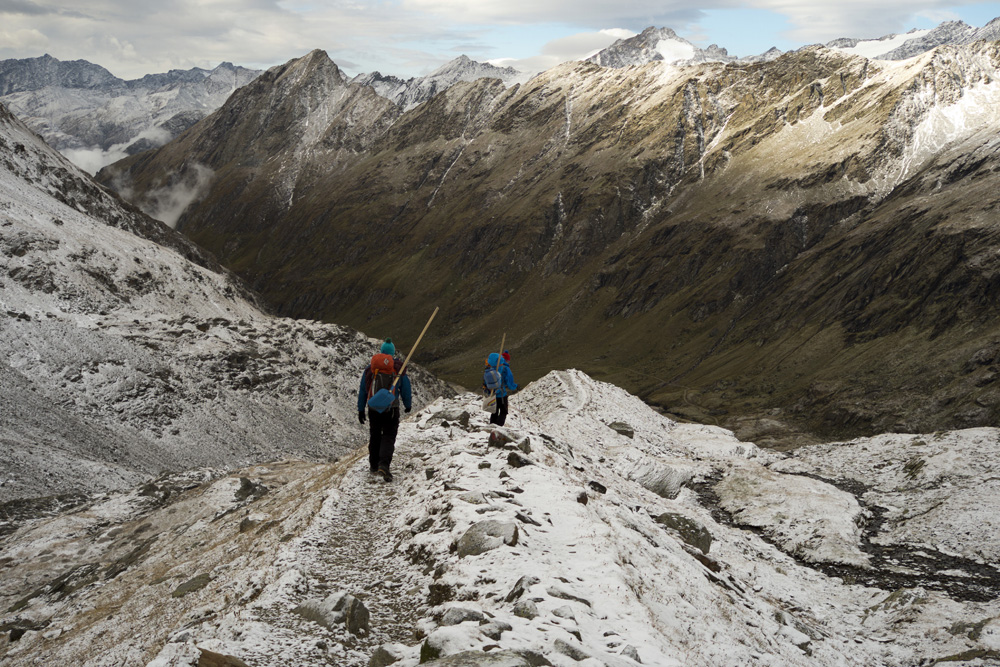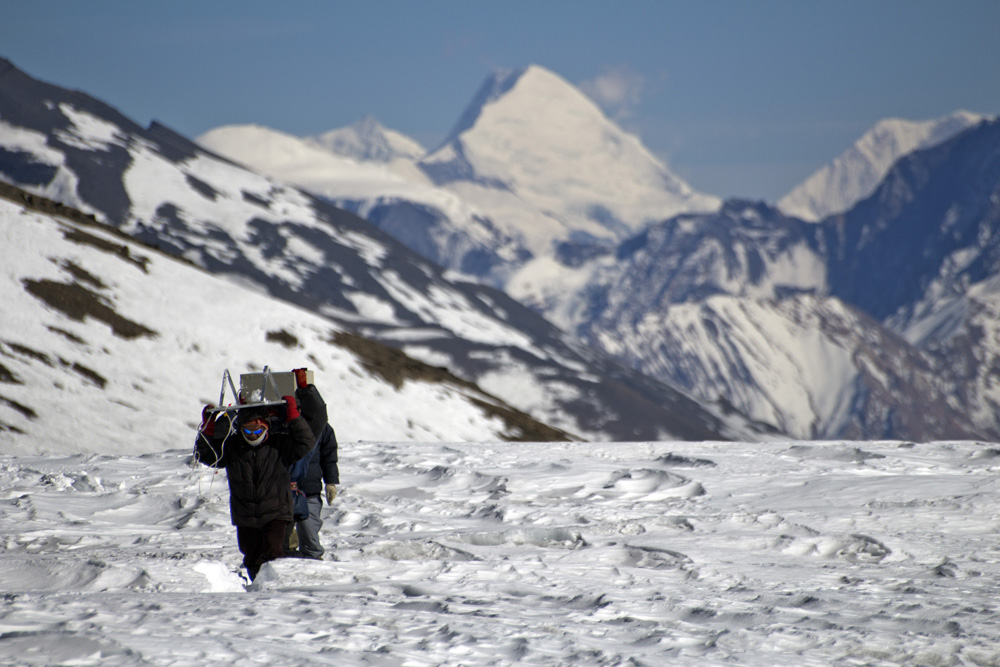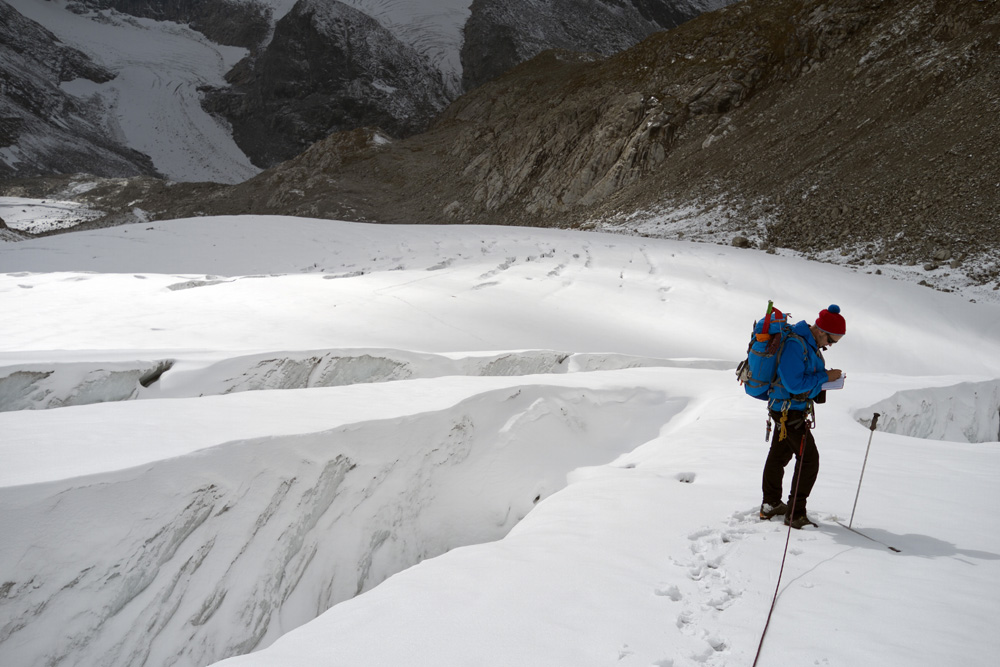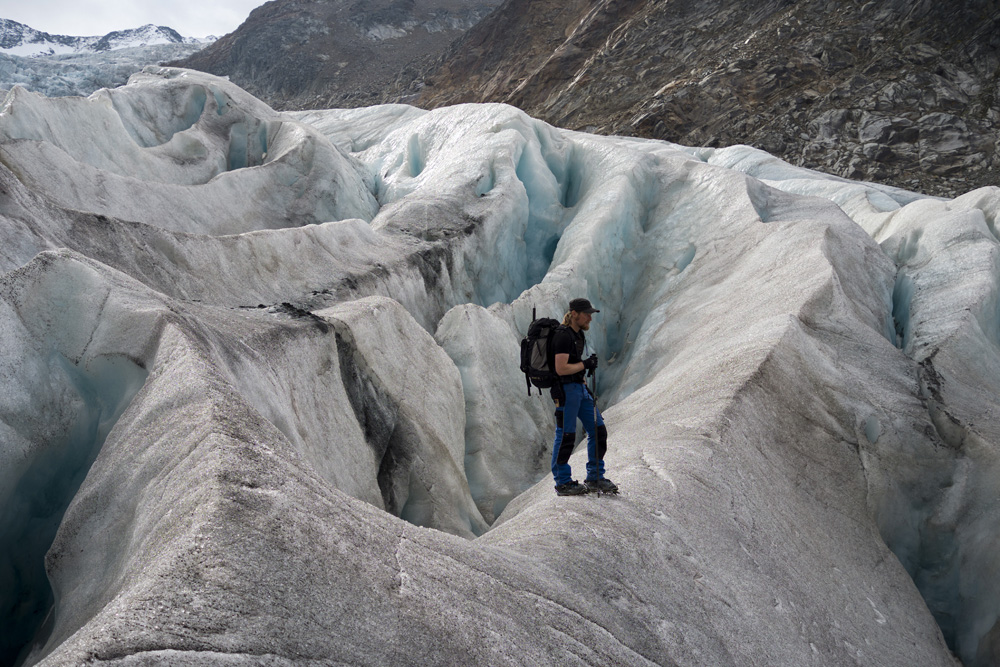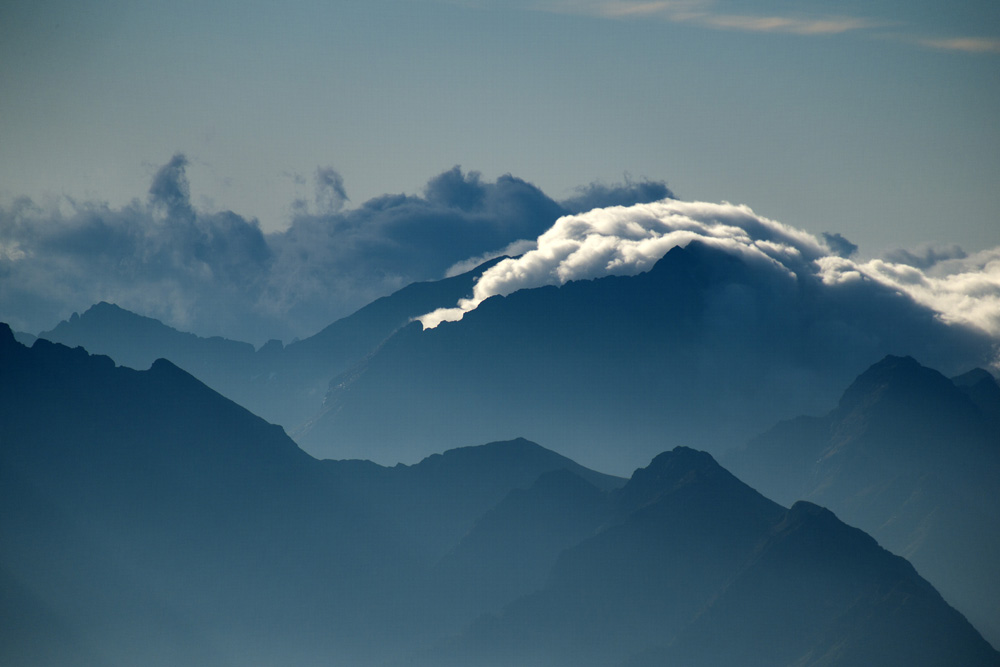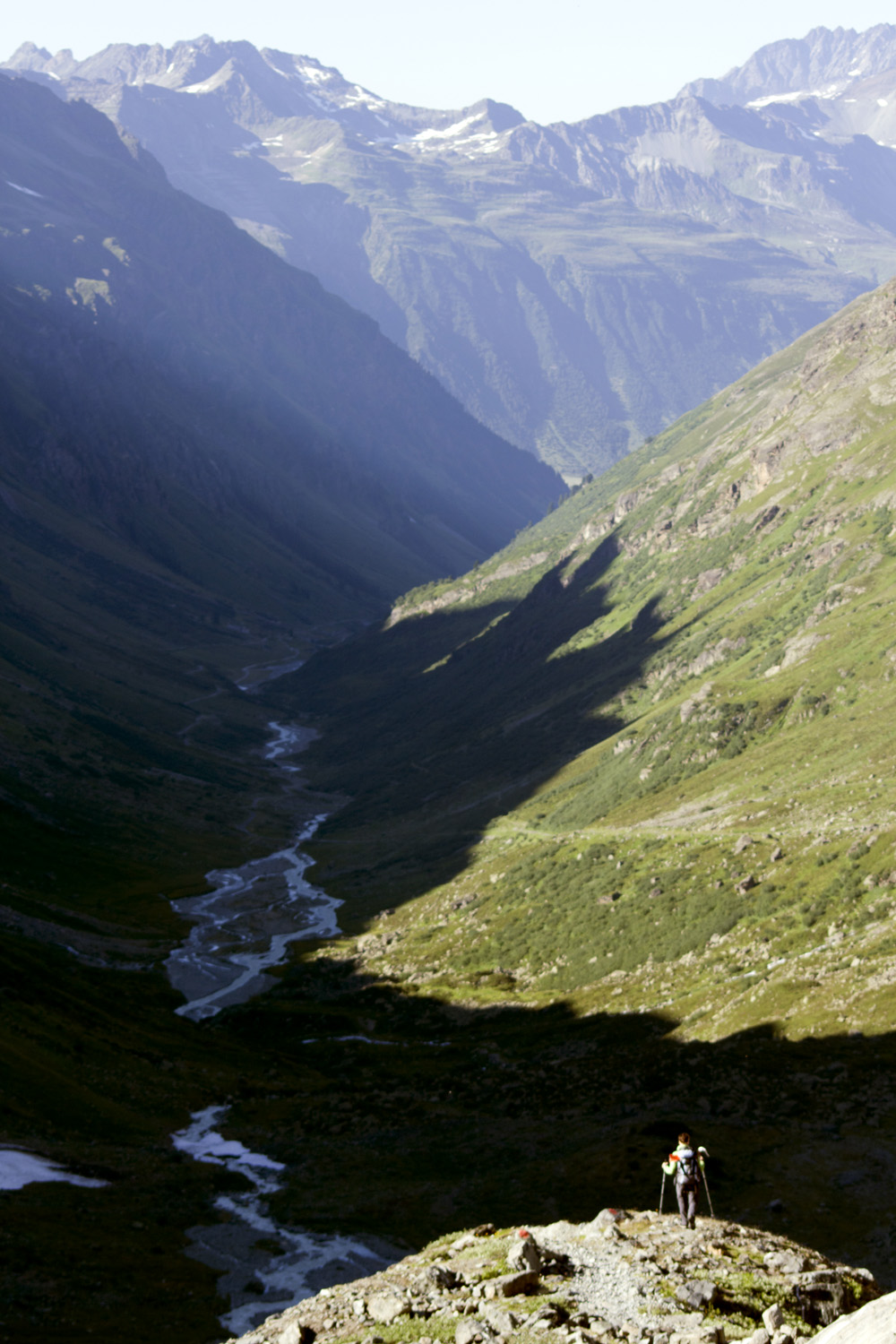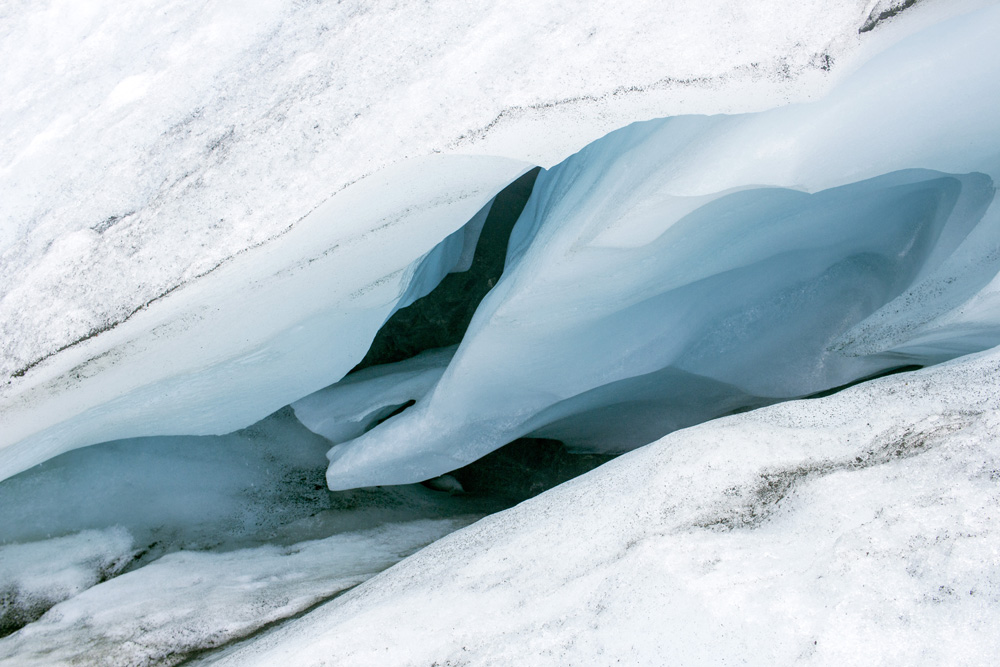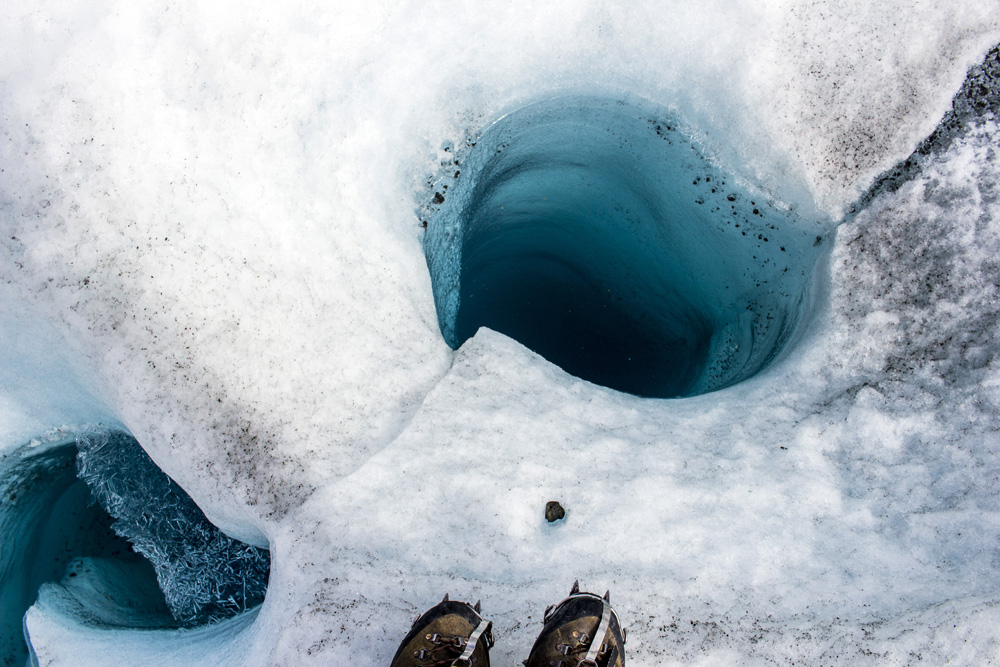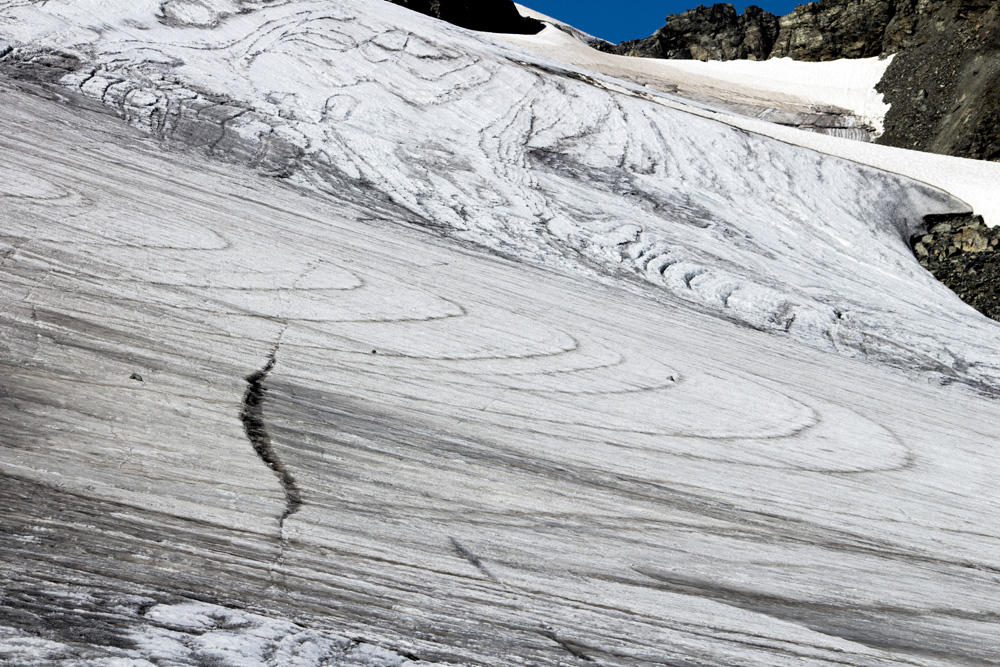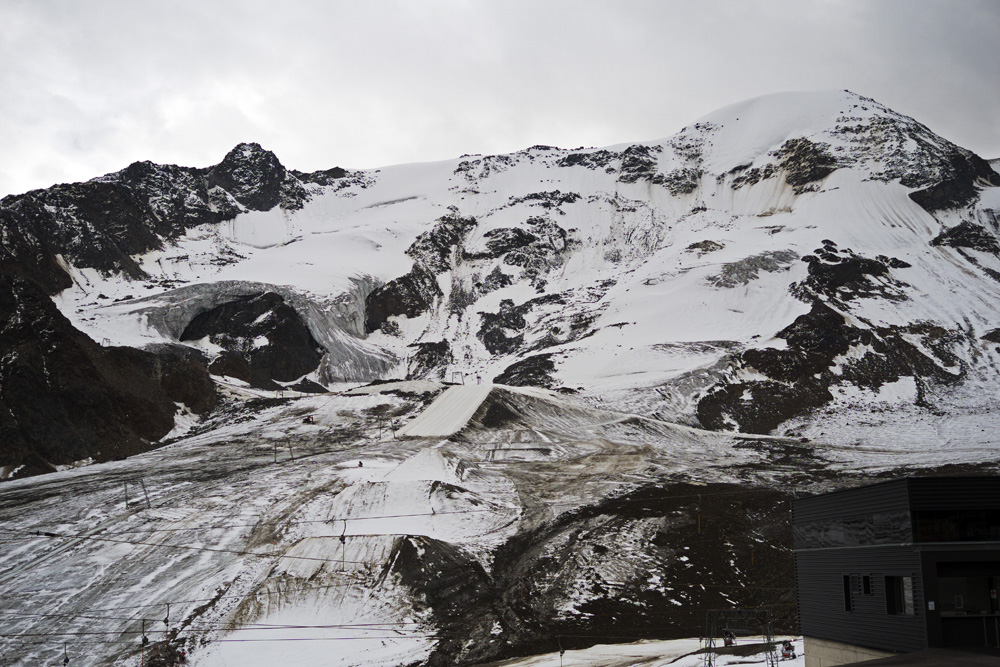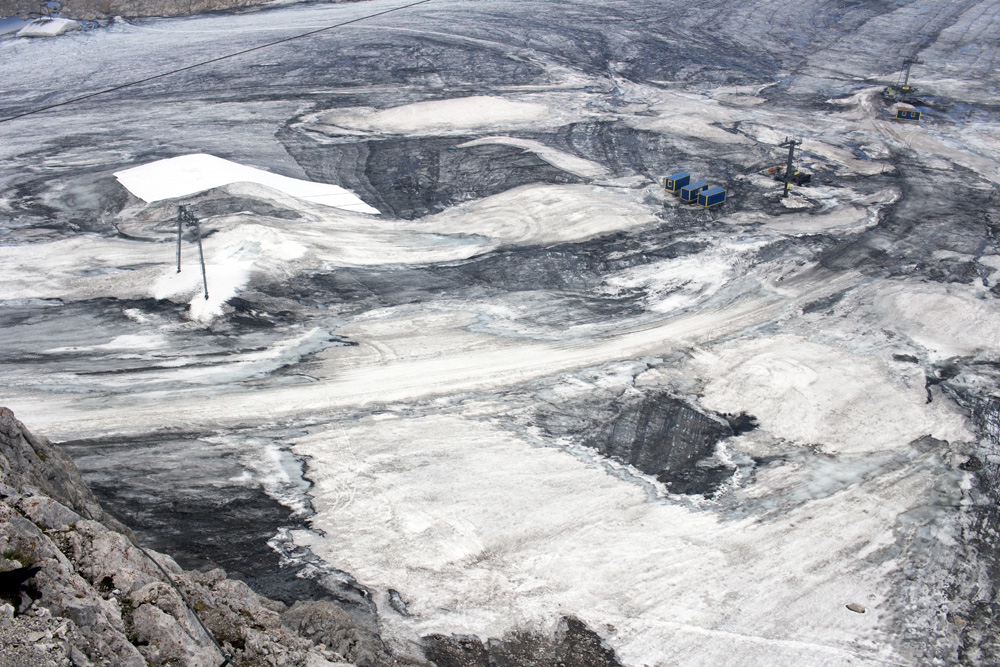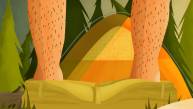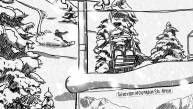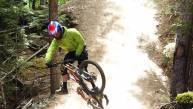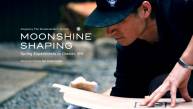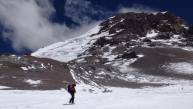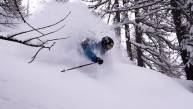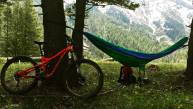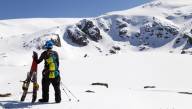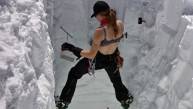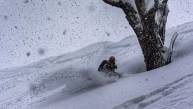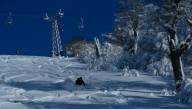tags:
The Alps |
trip report pick |tgr news |melting ice |klar |google news |glaciology |glacier |alps
Once upon a midnight dreary, I packed my bags so I could get up at 4 am to drive somewhere and drag them up a hill with my office mates, who are also my rope team. Thought I'd share some pictures from a few summers of glaciology fieldwork.
The mass balance describes how much mass a glacier gains or loses per year. If the lower parts of the glacier lose more mass in summer than the upper parts gain through snow accumulation, the glacier will shrink; if it is the other way round it will grow, and if the gains and losses balance out the glacier is in equilibrium state and remains the same size. There are different ways to measure the mass balance. You can do it with remote sensing data, or you can use geodetic, hydrology, or modeling based approaches. Or you can use the "direct glaciological method", which means actually going out and measuring things on the glaciers.
Each method has its pros and cons. There are other, more complex processes going on at various types of glacier, but if you want one number to describe the state of things, the mass balance is a pretty good start. Mass balance data from all over the world are collected by the WGMS.
At our office we do a bit of everything but a large part of summer is taken up by running around on glaciers we monitor via the direct method. When snow depth is greatest (late spring), we go and dig deep holes down to the ice or last year's snow, provided last year's snow survived the summer. We measure the density of the snow and calculate the amount of water we would have if we melted it all. This is the winter balance, or the amount of mass gained during the accumulation season.
Mostly we deal with something between 3 and 6 meters, but we've topped that. Beyond about four meters you need to start making terraces, or have really long arms. There is a certain sick satisfaction to be gained from digging a nice big hole and some people make an artform out of it, but mainly it makes your back ache. In places where it snows more than in the Alps, people use snow corers to avoid digging 10 meter deep holes.
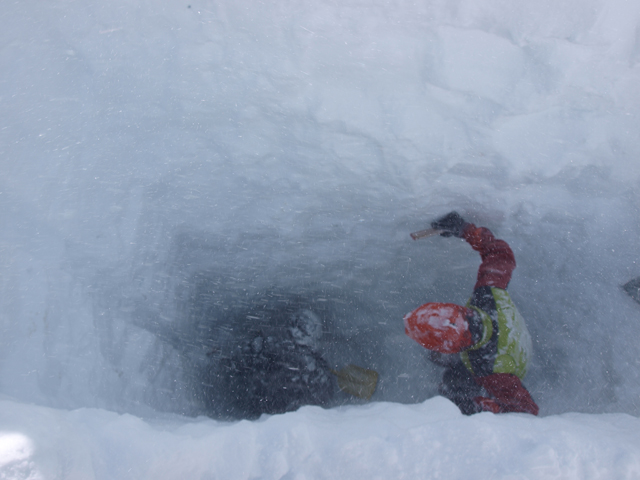 Sometimes it's cold, sometimes it's not.
Sometimes it's cold, sometimes it's not.
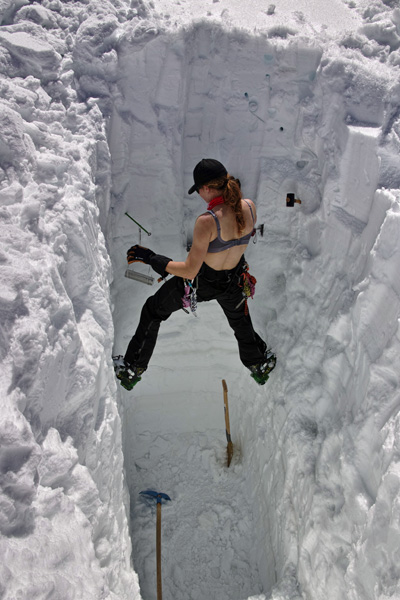 Once the snow has melted in summer, ice ablation (fancy word for melting) starts. To measure this, we drill long (usually around 8-12 meter) stakes into the ice with a steam drill and periodically check how much of the stake is sticking out of the ice. The end of the hydrological year (September 30th) marks the theoretical end of summer ablation, and we do a final reckoning of how much ice has melted on the tongues and how much snow remains in the higher regions of the glacier (if any). We then figure out how much net loss (or gain) occurred that year, averaged over the entire area of the glacier.
Once the snow has melted in summer, ice ablation (fancy word for melting) starts. To measure this, we drill long (usually around 8-12 meter) stakes into the ice with a steam drill and periodically check how much of the stake is sticking out of the ice. The end of the hydrological year (September 30th) marks the theoretical end of summer ablation, and we do a final reckoning of how much ice has melted on the tongues and how much snow remains in the higher regions of the glacier (if any). We then figure out how much net loss (or gain) occurred that year, averaged over the entire area of the glacier.
The steamdrill is a big pot where you heat water, which then comes out of a hose as hot steam.
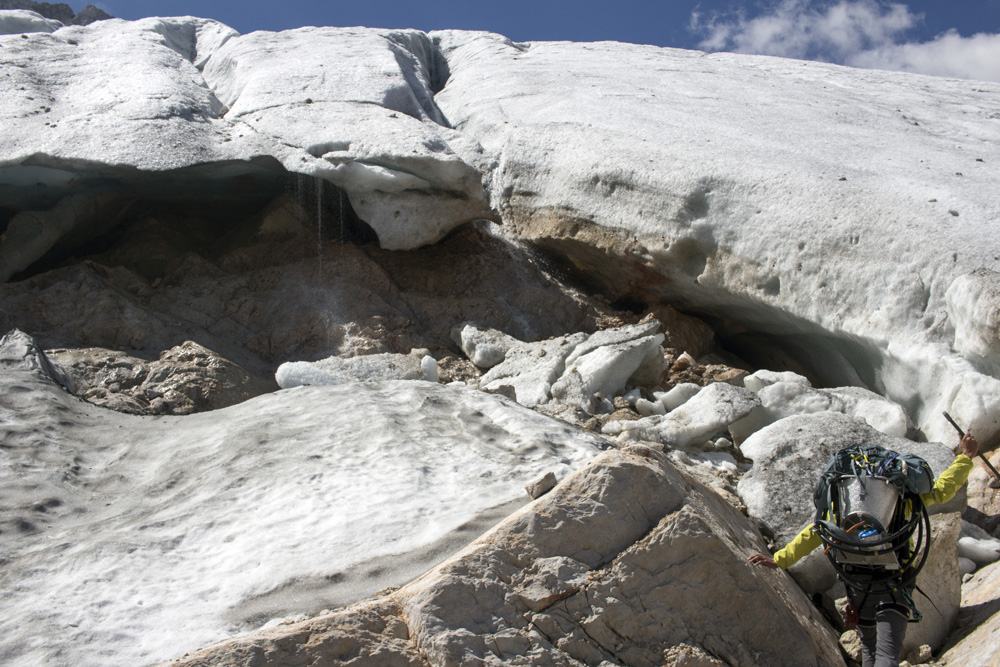 Carrying the steam drill sucks.
Carrying the steam drill sucks.
The whole thing heats up quite nicely, and you can kind of use it to cook things, which is fun but a little gross because glaciers in summer aren't actually very pristine and clean, and neither is the meltwater.
In general, summer is more important for the mass balance than winter. Even small summer snowfalls slow down the melting process considerably, because the new snow reflects most of the incoming radiation, which would otherwise melt the ice. The past two summers were rather wet and cool in the Alps, and the mass balance was less negative than in previous years at most of our glaciers and even a tiny bit positive on some.
This year, the summer started off hot and almost all of the winter snow that accumulated over the past seasons has melted. We've already seen between 1 and 4 meters of ice melt in the lower parts of our glaciers due to the warm weather and a relatively low winter snowpack.
While the global decline of glaciers is certainly a thing, natural variability of weather patterns is too, and there are always 'better' and 'worse' years regardless of any overall trend.
Mid July, 2013:
Beginning of August, 2015:
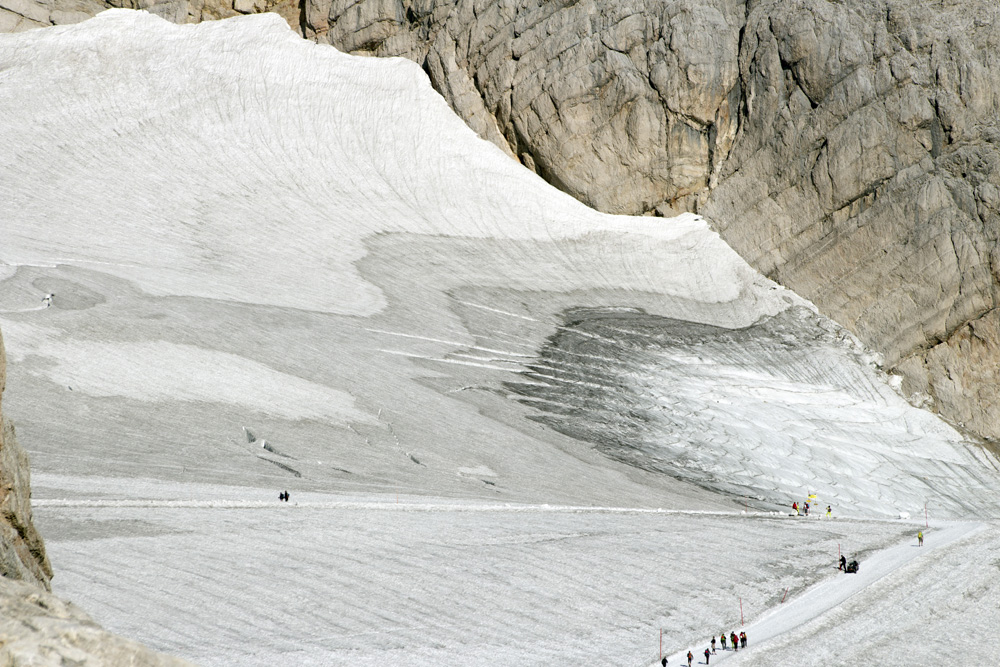 Three winter's worth of snow slowly retreating up the hill.
Three winter's worth of snow slowly retreating up the hill.
This kind of mass balance field work is not at all complicated from a scientific point of view, but it does get rather involved from a mountain-travel point of view. Days are long, packs are heavy and we quite frequently traipse around heavily crevassed glaciers in shitty conditions. A fresh blanket of fluffy October snow can be truly terrifying if you've already stuck a foot, or a leg, or two legs, into a bottomless crevasse three times and you still have an hour of walking to do before you can get off the damn ice.
This is the kind of fall situation we hate, even though it's quite pretty.
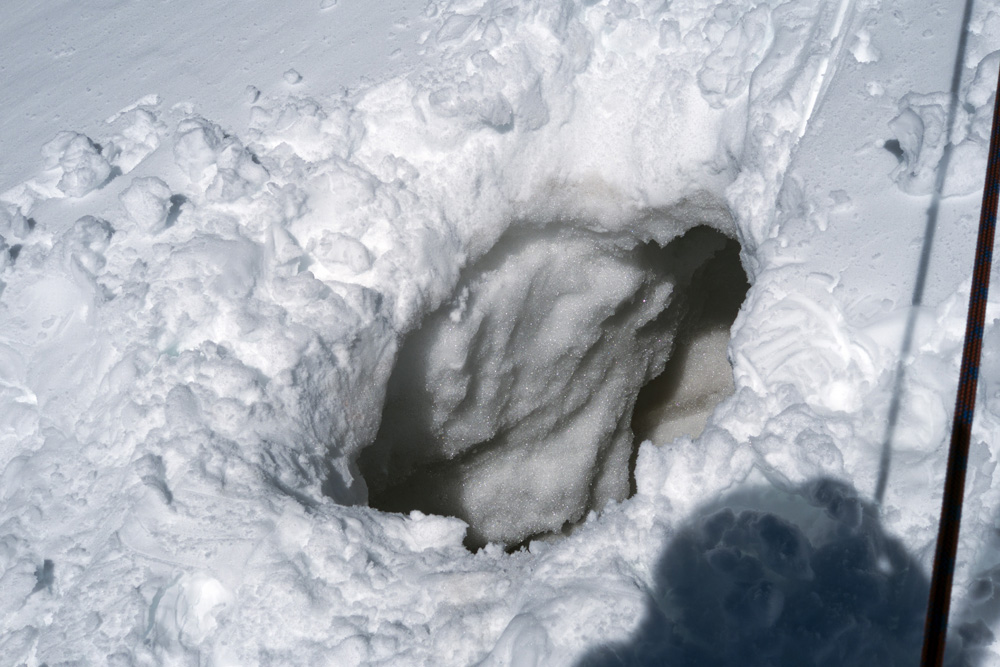 This does not look like much, but this is a bottomless hole that wants to eat you.
This does not look like much, but this is a bottomless hole that wants to eat you.
Long term monitoring is not sexy (=well funded) science, because results are not immediately publishable. Field glaciology only occasionally involves fancy instruments. The main tools of the trade are shovels and steam drills, and those aren't considered science-sexy either. Most of the regulars are grad students trying to finish a thesis and needing a bit of extra cash, friends of those grad students who like hiking and getting drunk in remote alpine locations, and a few die-hard professor types who are just really, really into some particular glacier.
We have a party at the end of the field season, and it involves a selfie contest. Last year Professor S., 70, won a pair of socks with a nice and bloody selfie he took immediately after slipping on the ice of the glacier he's been monitoring for decades and breaking his nose.
Constantly doing the same loops on the same glaciers can get a little old. On the other end of the spectrum, once you leave the relative comfort and accessibility of the Alps for other regions of the world, everything from logistics to safety is a completely different, much more challenging story.
 Public transit in the Himalaya.
Public transit in the Himalaya.
No matter where we happen to be digging or blowing steam into the ice, there are always some pretty special moments and I'm lucky to share my in- and outdoor office with some pretty unique people.
 And finally, who doesn't love a glacier ski resort in summer?
And finally, who doesn't love a glacier ski resort in summer?




